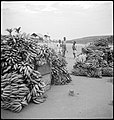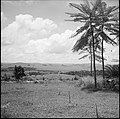The Armed Forces of the Democratic Republic of the Congo is the state organisation responsible for defending the Democratic Republic of the Congo. The FARDC was rebuilt patchily as part of the peace process which followed the end of the Second Congo War in July 2003.

The history of the Republic of the Congo has been marked by diverse civilisations: indigenous, French and post-independence.
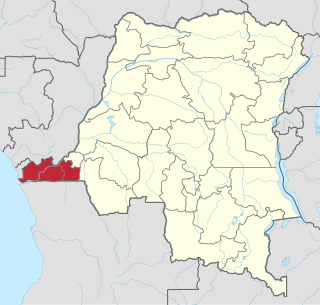
Kongo Central, formerly Bas-Congo is one of the 26 provinces of the Democratic Republic of the Congo. Its capital is Matadi.

The Islamic Republic of Iran Army Ground Forces, acronymed NEZAJA are the ground forces of the Islamic Republic of Iran Army.

The Turkish Land Forces, or Turkish Army, is the main branch of the Turkish Armed Forces responsible for land-based military operations. The army was formed on November 8, 1920, after the collapse of the Ottoman Empire. Significant campaigns since the foundation of the army include suppression of rebellions in southeastern Turkey from the 1920s to the present day, combat in the Korean War, the 1974 Turkish invasion of Cyprus and the current Turkish involvement in the Syrian Civil War, as well as its NATO alliance against the USSR during the Cold War. The army holds the preeminent place within the armed forces. It is customary for the Chief of the General Staff of the Turkish Armed Forces to have been the Commander of the Turkish Land Forces prior to his appointment as Turkey's senior ranking officer. Alongside the other two armed services, the Turkish Army has frequently intervened in Turkish politics, a custom that is now regulated to an extent by the reform of the National Security Council. The current commander of the Turkish Land Forces is General Musa Avsever.
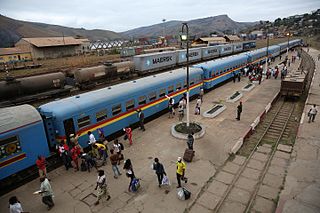
The Matadi–Kinshasa Railway is a railway line in Kongo Central province between Kinshasa, the capital of Democratic Republic of the Congo, and the port of Matadi.
Nsundi was a province of the old Kingdom of Kongo. Its capital was located on the Inkisi River, near the present-day village of Mbanza Nsundi in Democratic Republic of Congo.

The Jinan Military Region was a PLA Military Region located in the east of the People's Republic of China, covering the Shandong and Henan Provinces, which also formed military districts. It appears that Yang Dezhi was one of the first commander of the Jinan MR, from 1958. It was considered a strategic reserve. It included some of the area previously within the Wuhan Military Region, which was disbanded in 1985–88.

The Shenyang Military Region was one of seven military regions for the Chinese People's Liberation Army. It has command and control of military and armed police forces in the three northeast provinces of Jilin, Heilongjiang, and Liaoning, which also form Military Districts. This region is now superseded by the Northern Theater Command.
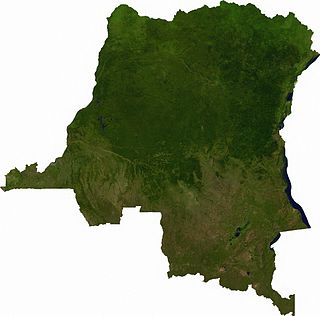
Articles related to the Democratic Republic of the Congo include:
The Algerian Land Forces are the land forces of the Algerian People's National Army. The forces' equipment is supplied by Russia and various other countries.
Caecobarbus geertsi, the African blind barb or Congo blind barb, is a species of cyprinid fish. This threatened cavefish is only known from Democratic Republic of the Congo, and it is the only member of the monotypic genus Caecobarbus. George Albert Boulenger described this fish in 1921 and it apparently lacks any close relatives in the Congo region.
Kongo University is a university in the Democratic Republic of the Congo. Its name is abbreviated to UK, after its French name. The main offices of the university are located in Mbanza-Ngungu. UK currently operates two linked campuses, at Mbanza-Ngungu and at Kisantu. A permanent third campus at Mbanza-Luvaka has been under construction since 1992.
The Thysville Caves are a cave complex in the Democratic Republic of the Congo, located near the town of Mbanza-Ngungu. The cave complex is fed by tributaries of the Lower Congo River, and extends across an area of 750 square kilometers.

Mass media in the Democratic Republic of the Congo are both nationally and internationally state owned and operated.

Mbanza-Kongo, is the capital of Angola's northwestern Zaire Province with a population of 148,000 (2014). Mbanza Kongo was founded some time before the arrival of the Portuguese in 1483 and was the capital of the Kilukeni dynasty ruling at that time. The site was temporarily abandoned during civil wars in the 17th century. It lies close to Angola's border with the Democratic Republic of the Congo. It is located at around 6°16′0″S14°15′0″E and sits on top of an impressive flat-topped mountain, sometimes called Mongo a Kaila because recent legends recall that the king created the clans of the kingdom and sent them out from there. In the valley to the south runs the Luezi River. In 2017, Mbanza Kongo was declared as a UNESCO World Heritage Site.
The Land Forces, also called the Congolese Army, are the land warfare component and the largest branch of the Armed Forces of the Democratic Republic of the Congo (FARDC).
Henrique II was ruler of the Kingdom of Kongo. His rule came after the end of a period of conflict in the kingdom after the death of Afonso V, who was said to have been poisoned. Henrique was able to take the throne as a compromise between the various powerful factions which had been brokered by the Água Rosada house, the descendants of Pedro IV, who had familial ties to branches of both Kinlaza and Kimpanzu houses. Under this peace, Henrique was able to rebuild the nation, and eventually passed the throne on to Garcia V, a member of the Água Rosada house.
Afonso V of the Congo was a Kinlaza manikongo of the Kingdom of Kongo from 1785 to 1787. He succeeded to his brother José I of Kongo without any struggle in April 1785 and was part of the southern faction of the Kanda Kinzala based in Nkondo. He was a king known for his piety and took the pompous title of the powerful Dom Alfonso V, King of Congo, ruler of part of Ethiopia in his letters. It is possible he was poisoned by his successor in order to seize the throne. His sudden death caused a period of turmoil within the nation that would not end until Henrique II took the throne.
Henrique III Mpanzu a Nsindi a Nimi a Lukeni was ruler of the Kingdom of Kongo from the Kivuzi branch of the Kinlaza house, who reigned from 1840 until 1857. Henrique came to power when he overthrew his predecessor, André II. This was with the support of the elector Ntinu Nsaku. Henrique did not manage to kill Andre II and King Andre continued to exercise power from Mbanza Maputu over some of the Kongo realm.


